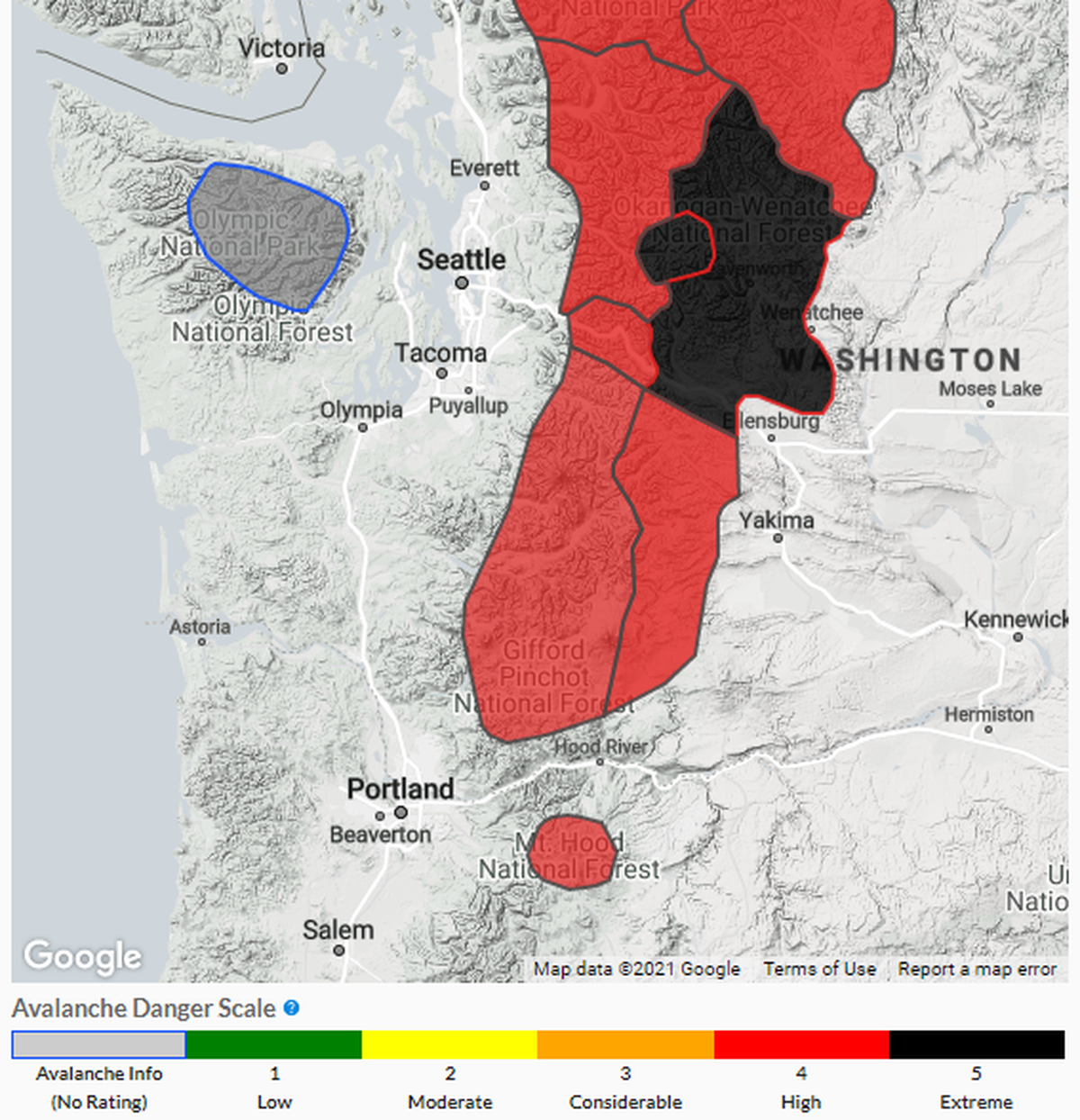Snoqualmie, Stevens, White passes reopen – but they could all close again

After the threat of avalanches closed the three main routes between Seattle and Spokane on Sunday evening, the state Department of Transportation reopened them one a time over the course of Monday, improving the flow of traffic across the Cascades. But with 18 to 24 inches of snow in the forecast, they may all have to close again.
Summer Derry, a Department of Transportation spokeswoman, said the snow was expected to start flying Monday evening.
If the forecast proves true and 2 feet of snow piles up, she said, the threat of avalanches may well lead to new closures. Another factor, she said, will be “driver behavior,” as accidents could also force the transportation department to shut down Snoqualmie, Stevens and White passes.
Closing all three passes is rare, Derry said, but not unprecedented. The last time it happened was in February 2017, she said. It also happened in February 2008.
When all three passes were shut down, those headed to Seattle were required to detour to Interstate 84 along the Columbia River before heading back north.
But by 10 a.m., cars were allowed to cross over White Pass on U.S. Highway 12 south of Seattle.
WSDOT then opened the main east-west route over Snoqualmie Pass along Interstate 90 at noon.
Two hours later, the department reopened Stevens Pass.
Derry said WSDOT decided to take the unusual step at 6 p.m. Sunday, after the Northwest Avalanche Center issued an ”extreme avalanche warning” for much of the Cascades effective through 6 p.m. Monday.
“Heavy snow, strong winds, and warming temperatures will create extremely dangerous avalanche conditions Sunday night through Monday,” the Avalanche Center reported. “Avalanches will run from upper elevations, could be very deep and destructive, and could break trees. Avoid going into, near or underneath anywhere an avalanche could start, run and stop, including hiking trails and roads that cut across steep slopes.”
As rain and rising temperatures weakened the snowpack, WSDOT decided to take a “proactive approach” so that natural slides wouldn’t come down “under live traffic,” Derry said.
Those concerns proved warranted at both Snoqualmie and Stevens passes.
Between Sunday evening and Monday morning, Stevens Pass saw a total of five natural slides come down on the highway. Avalanches also came down both of the main slide paths WSDOT was concerned about on Snoqualmie Pass.
At White Pass, though, the main issue was a lack of drainage that meant water was on the roadway. Crews had to clean out snowbanks and culverts before opening the highway at 10 a.m.
“We are in the business of keeping the highways open,” Derry said. But the danger posed Sunday night into Monday morning, she said, was “a serious matter.”
WSDOT operates 24/7 avalanche control programs at both Stevens and Snoqualmie, where crews knock down as much snow as they can to prevent avalanches from reaching the roadways.
“But sometimes we need to step back and let mother nature do the work,” Derry said.